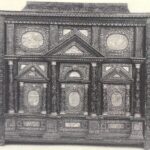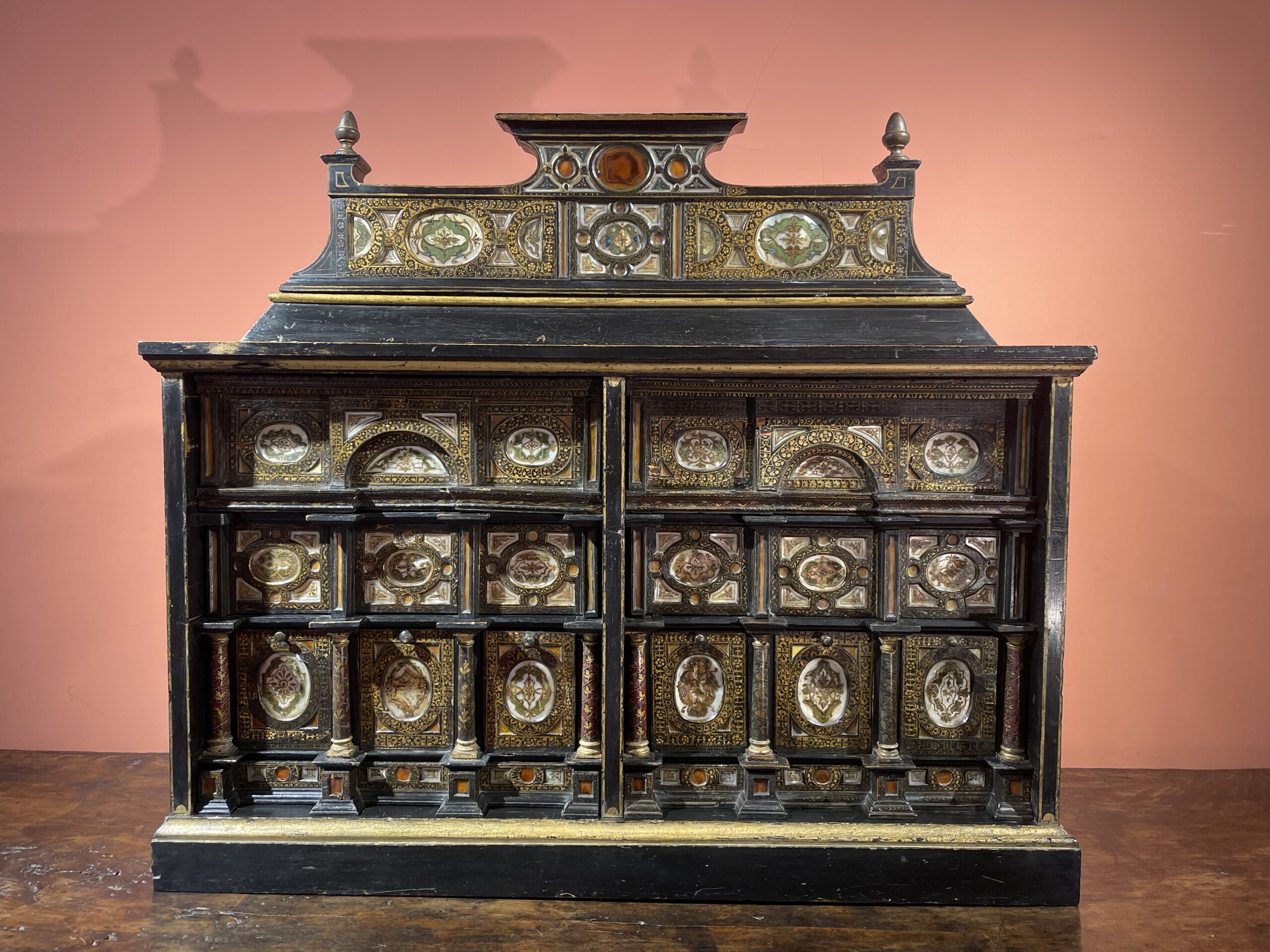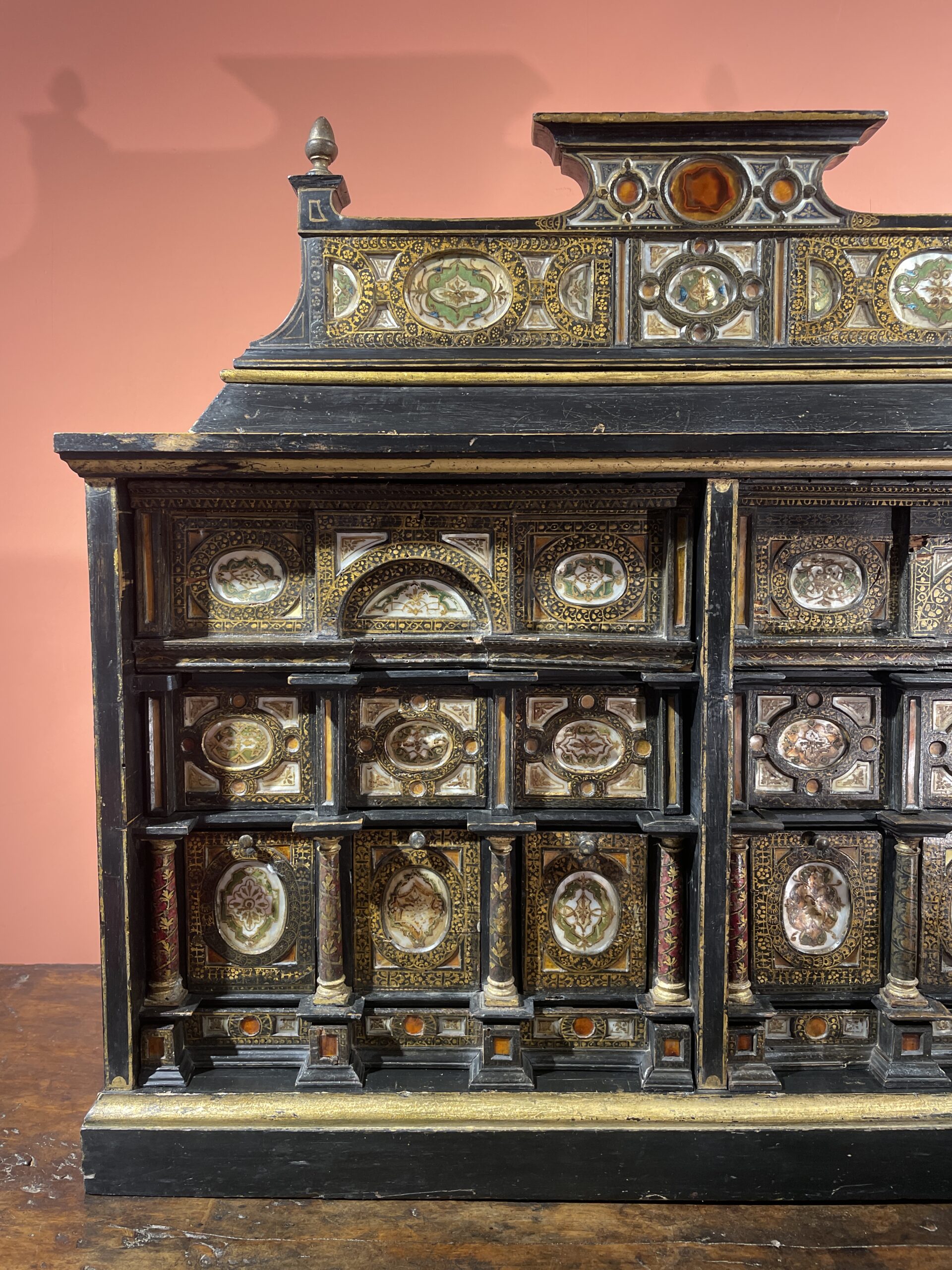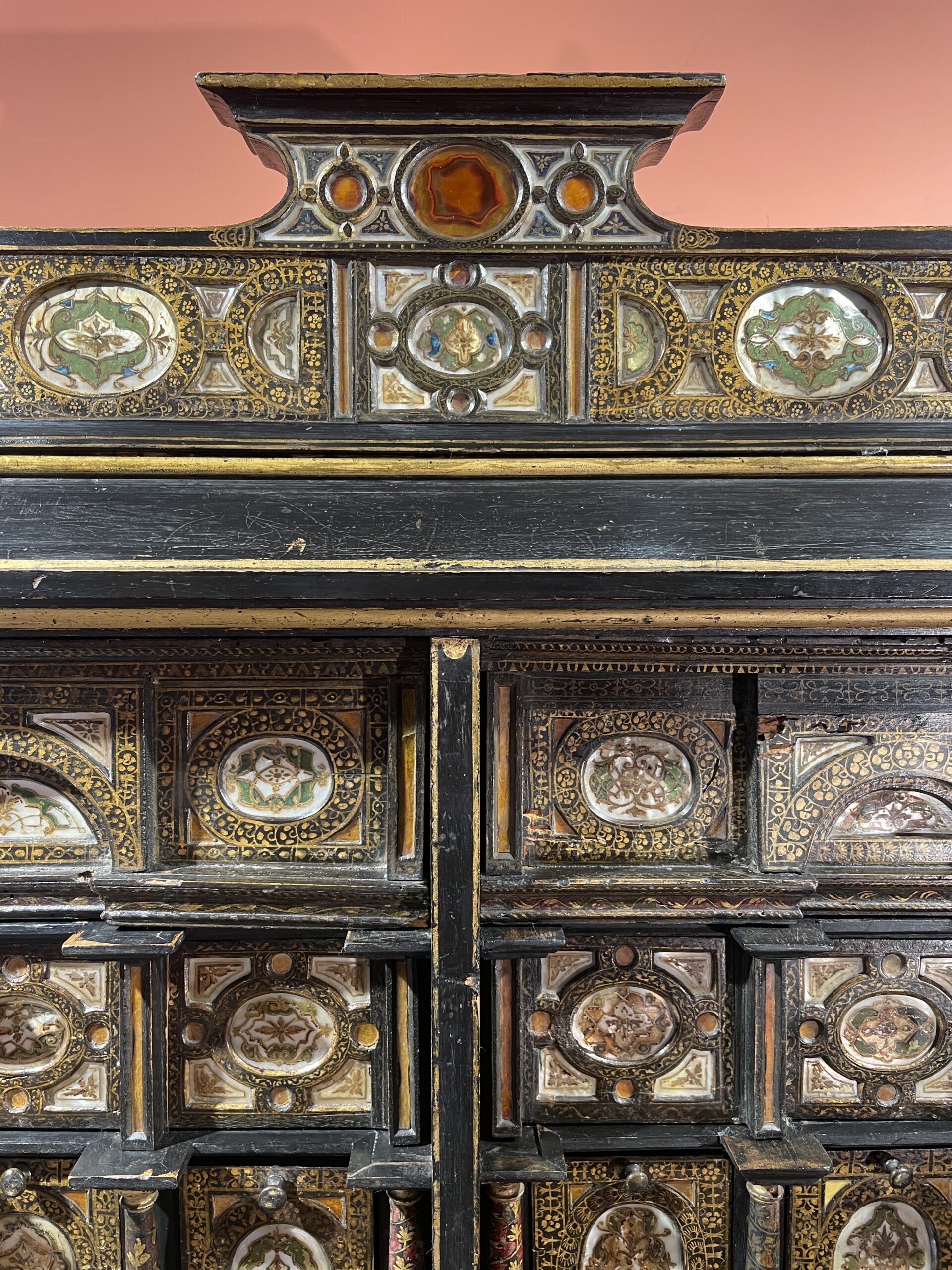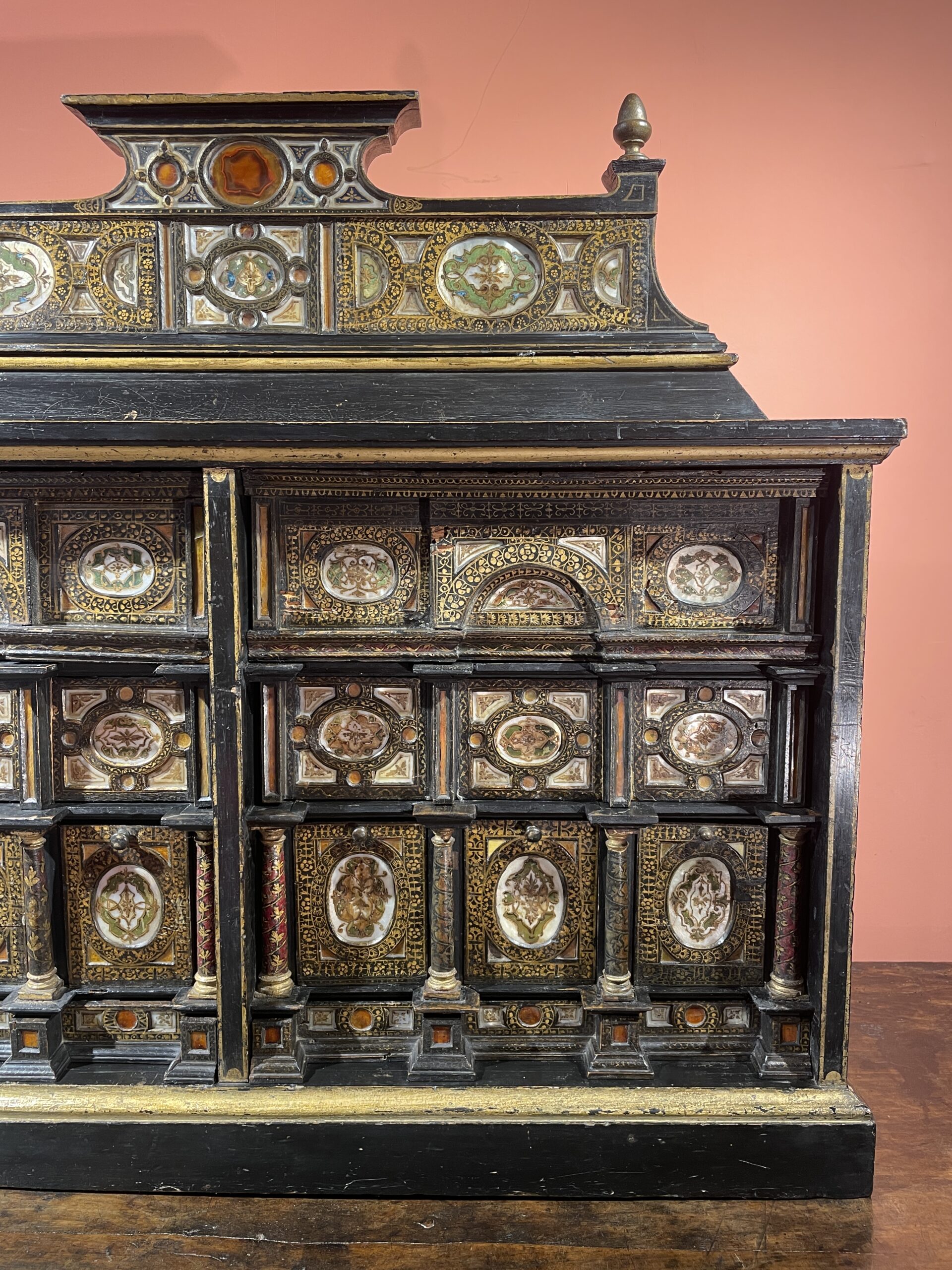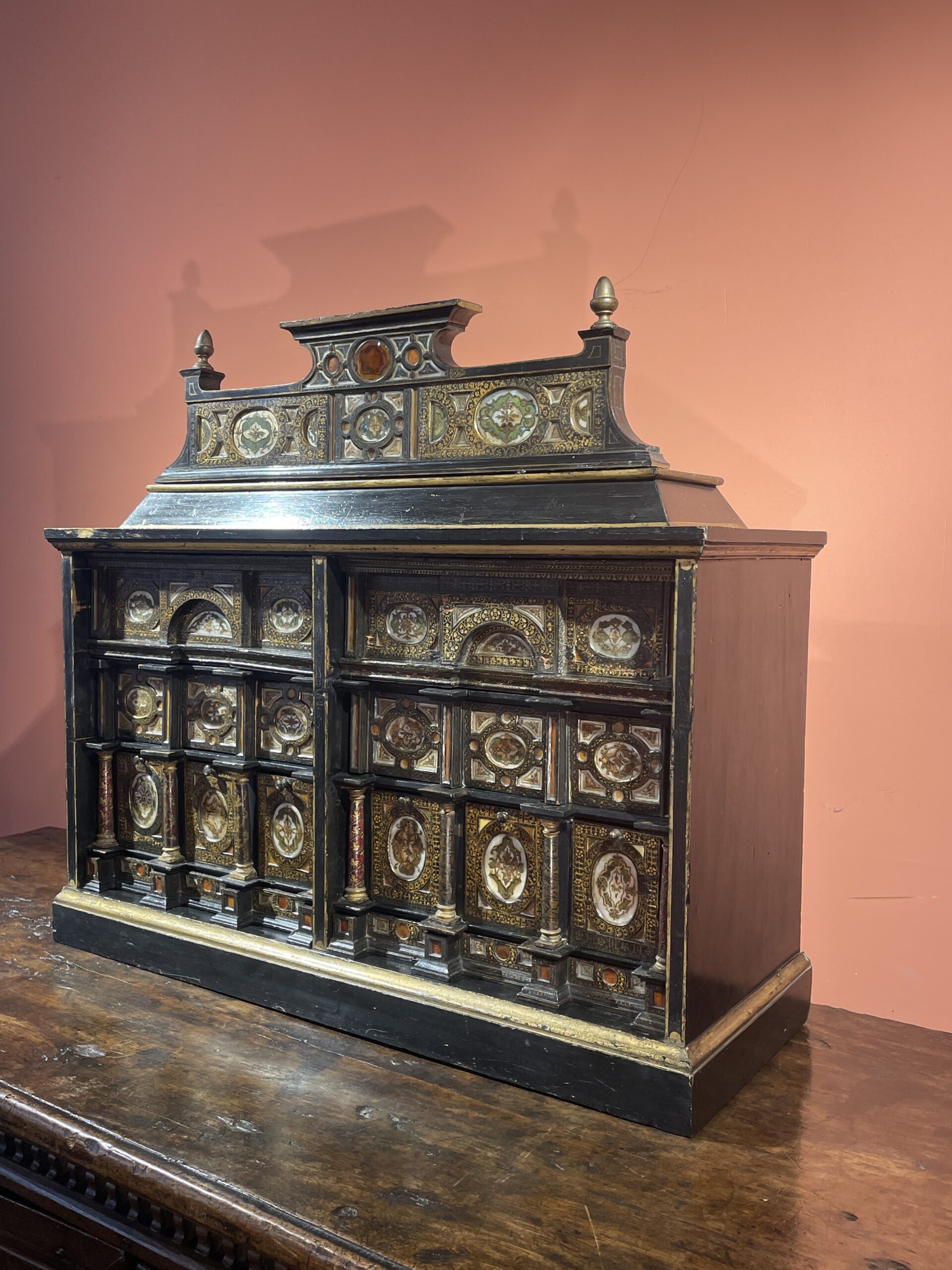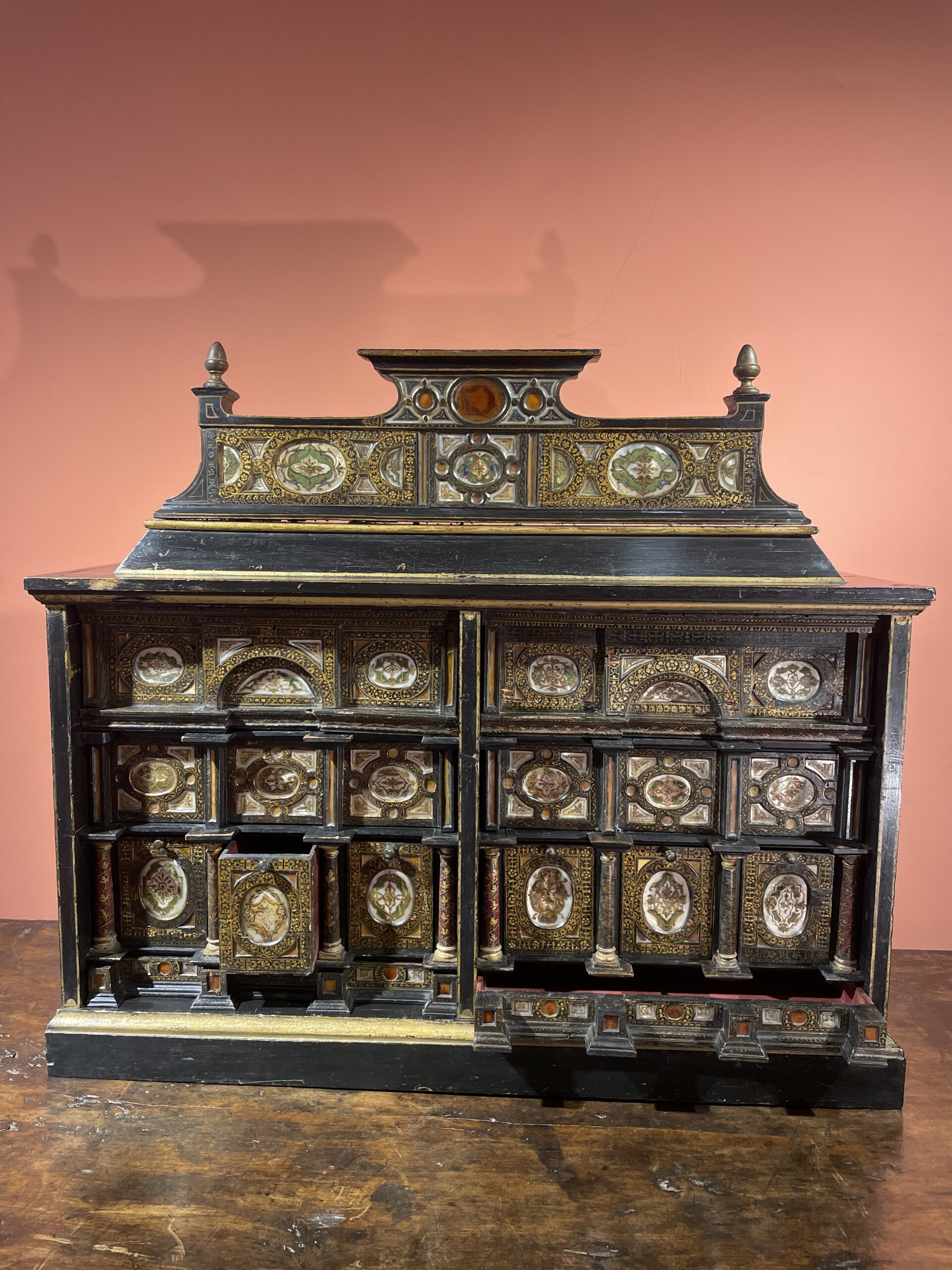Description
This precious cabinet crowned with a pediment is of rare beauty. In blackened wood adorned with golden fillets and inlaid with mother-of-pearl depicting bouquets of flowers, as well as hard stones, it is an excellent example of 16th-century Venetian production. Here, the decoration matches with the functionality of the object, which serves as a ‘cabinet of wonders’.
The earliest Venetian cabinets were small in size. In Italy, with the technique of “commesso,” highly specialized artisans choose, cut, carve, and assemble marbles, hard stones, and pieces of mother-of-pearl that adorn these “cabinets of wonders” with numerous secret drawers.
This model exemplifies this well: the decoration plays on combinations of colors, materials, grain patterns, transparency, and brightness.
It is structured according to the architectural order of a palace entrance, with each compartment delimited by frames and moldings. The nacreous spandrels and medallions are painted so finely and diversely that they can jolly give the illusion, when viewed from afar, of veined marbles.
While the relief surfaces tame the more intricate volume of the painted columns. In this sumptuous and delicate association, a whole world of hidden drawers and compartments is concealed in trompe-l’oeil.
The organization of the different elements looks nicely like the Venetian palaces from the early 16th century. In fact, a certain exotic air of the decoration seems to evoke the cosmopolitan and a sweet Levantine atmosphere of the Serenissima, but the inspiration is deeply classical, an artistic testimony of the uninterrupted connection of a great tradition.
The Quirinal Palace in Rome preserves a Cabinet from a Venetian workshop of the second half of the 16th century, which adopts the same painted decoration and circular cartouches as those of ours.
